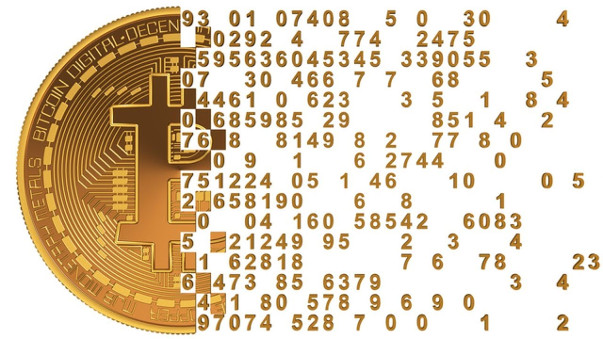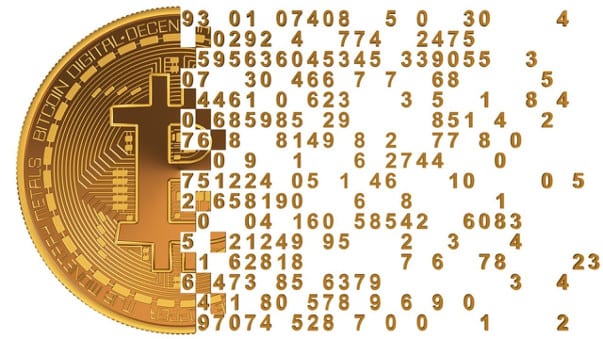Tuesday started with a bang, as bitcoin bulls awoke from their slumber. The bitcoin prices surged above 7 000 dollars in less than 30 minutes. As of the time of writing, bitcoin is moving in ranges of about 7 400 dollars and the price is still seeing some growth.
Experts and investors have been expecting this reversal for quite a some time, but it is still too early to say if it’s yet on firm enough grounds. Nonetheless the short-term future is looking good for bitcoin.
As bitcoin begun its rocket-like rise back to ranges over $7 000, other cryptos got into the boat as well. Cryptomarkets in general have seen good growth after bitcoin’s jump, with most of the major cryptocurrencies on the green.

After a period of rest, Bitcoin is showing its power again.
Bitcoin Connected to US Election Hack
The U.S. intelligence’s probe on alleged Russian involvement with USA’s presidential elections of 2016 has been connected to Bitcoin. According to the deputy attorney general Rod Rosenstein, the twelve indicted Russian intelligence officers used Bitcoin to fund some of their operations.
According to USA’s officials the Russian officers used bitcoin to pay for website domains, advertising and other such services. In addition the attorney’s office believes that some of these bitcoins were mined just for these operations.
“In addition to mining bitcoin, the Conspirators acquired bitcoin through a variety of means designed to obscure the origin of the funds. This included purchasing bitcoin through exchanges, moving funds through other digital currencies, and using pre-paid cards. They also enlisted the assistance of one or more third-party exchanges who facilitated layered transactions through digital currency exchange platforms providing heightened anonymity,” the indictment reads.
According to the indictment, the US government officials were able to track the Bitcoin transactions and connect them to the computers used by the hackers. Though the hackers had tried to obfuscate their activities by using dedicated email accounts, they also used the same computers for bitcoin and hacking activities.

Though the US is investigating 12 hackers, Vladimir Putin still denies the allegations that Russia has meddled with the presidential elections of 2016.
The Biggest Update Since SegWit Coming to Bitcoin
An influential Bitcoin developer Pieter Wuille has unveiled a draft for a proposal which would implement the so called Schnorr signatures to Bitcoin. This marks the first major step in which might become the biggest single update since the Segregated Witness implementation of last summer.
In a nutshell Schnorr gives the users an additional way to generate the cryptographic keys used in Bitcoin transactions. Unlike the previous ways of generating cryptographic keys, Schnorr signatures can be mathematically proven to be safe. Additionally Schnorr can be used as a scaffolding to tackle some of the Bitcoin’s main problems, such as scalability and privacy.
“Standardizing Schnorr for bitcoin is a big step towards using it in bitcoin,” Pieter Wuille told.
Unlike SegWit, there doesn’t seem to be as much divisive opinions on Schnorr: instead most of the community see Schnorr signatures as a positive update. Though the developers are optimistic on the future of Schnorr, it will still take some time for it to manifest as a working code.
“Like any consensus change, it will be a long process involving fully fleshing out a draft for integration, publishing it, gathering comments from the technical community and ecosystem, writing implementations of both consensus rules and integration in wallet software, proposing a deployment plan, and if all goes well, get it activated,” Jonas Nick, the co-author of Schnorr draft and an engineer on Blockstream said.

Schnorr signatures could be used to propel Bitcoin to new levels of useability.
Future Mining Could Be Done With Lasers
A new kind of mining has been proposed for Bitcoin, reports Bitcoin Magazine. A nonprofit organization PoWx has launched an effort to develop what the company is calling “optic proof-of-work”, or optic PoW for short.
Optic mining is a new type of mining that can be done with dedicated mining hardware which uses laser technology as the basis of mining. If the PoWx succeed, optic PoW could be used to create small miners that use only a fraction of energy compared to previous miners. This is turn could be answer to two big problems in Bitcoin mining; centralization and power consumption.
“Bitmain has compromised Bitcoin’s security, so changing to a new proof-of-work algorithm is necessary to secure the network again. One problem that enables mining centralization is that electricity costs are lower for large corporations than they are for ordinary users. Optical PoW claims it can eliminate this problem, and since it is an entirely new kind of technology, it also eliminates almost all of Bitmain’s advantages in trying to monopolize a new algorithm,” Bitcoin Core developer Luke Dashjr told.
For optical mining to become reality, there are still many major obstacles to overcome. First of all the development of the new tech requires significant funds, and PoWx has far less resources than competing major mining pools. Additionally to adopt optical mining, changes would have to be made to Bitcoin’s code, which would require the consensus of Bitcoin community.
“Any PoW change requires consensus from the entire community, and thus far, it doesn’t seem probable that we will achieve that, in large part due to fear, uncertainty and doubt spread by miners who make it sound more dramatic than the simple change it really is. The community will need to overcome these unwarranted fears before Bitcoin can successfully migrate to a new algorithm,” Dashjr believes.
PoWx is estimating the release date of the first optical proof-of-work prototypes to be as soon as in 2019.
 Mining with lasers sounds futuristic, and PoWx thinks that it indeed is the future of mining hardware. (PICTURE: Jeff Keyzer)
Mining with lasers sounds futuristic, and PoWx thinks that it indeed is the future of mining hardware. (PICTURE: Jeff Keyzer)
Chinese Inventors Want to Store Cultural History in the Blockchain
Three inventors in China’s Tshinghua University have presented patent for a new project, which aims to preserve objects of cultural significance into blockchain. From this open chain, the objects could be downloaded and replicated to used by museums, universities and researchers.
The project has two main parts; the 3D scanning of objects and uploading them to the blockchain. The inventors envision that each participant, such as a museum or university, would have their own copy of the constantly up-to-date blockchain and entirety of collections.
“Based on the unique design of blockchain for exchanging information, the digital identification of each cultural heritage can be transferred among different parties at lower costs with higher efficiency, so that we can enlarge their economic and social values,” the research team believes.
As technology progresses further, 3D printers could be used to create precise replicas of these objects. With enhanced, more precise 3D scanning the same principles could also be expanded to copy and distribute objects important for natural sciences, such as fossils.
 If the idea behind the patent works, in principle it could be used to establish a collective database of historical relics of mankind. (PICTURE: PericlesofAthens)
If the idea behind the patent works, in principle it could be used to establish a collective database of historical relics of mankind. (PICTURE: PericlesofAthens)
Dogecoin One of the High-Risers
Besides bitcoin, one of the biggest growers of the beginning of the week and last weekend is – perhaps surprisingly – Dogecoin. Originally created as a parody of altcoin craze, Dogecoin has since then gained a stable community around itself. Based on a popular meme of cute Japanese shiba inu dog, Dogecoin still doesn’t look signs of becoming “an old joke”.
Within last week, dogecoin’s market value has risen over 72%. This growth isn’t based entirely on hype, as Dogecoin infrastructure has seen some real development as well. Just yesterday Robinhood, an US-based trading company, announced that it will add Dogecoin to its popular platform.
Though Dogecoin doesn’t have any real technical advantages, nor does it even try to challenge the institutional money, the community around it is strong. Dogecoin is used in many places over the Internet and the community has even managed to sponsor their own race car. Dogecoin community was also responsible for funding the Olympian efforts of Jamaican bobsled team in Winter Olympics of 2014. All this with a “joke money”.
It is extremely hard to predict what is the future of Dogecoin. For those interested in cryptocurrencies as a hobby could find lots of fun from Dogecoin and the community surrounding it. For serious investors there are probably money altcoins, which are more stable than Dogecoin.
 Dogecoin is based on one of the most popular memes of all time, Doge, the pondering shiba inu.
Dogecoin is based on one of the most popular memes of all time, Doge, the pondering shiba inu.

